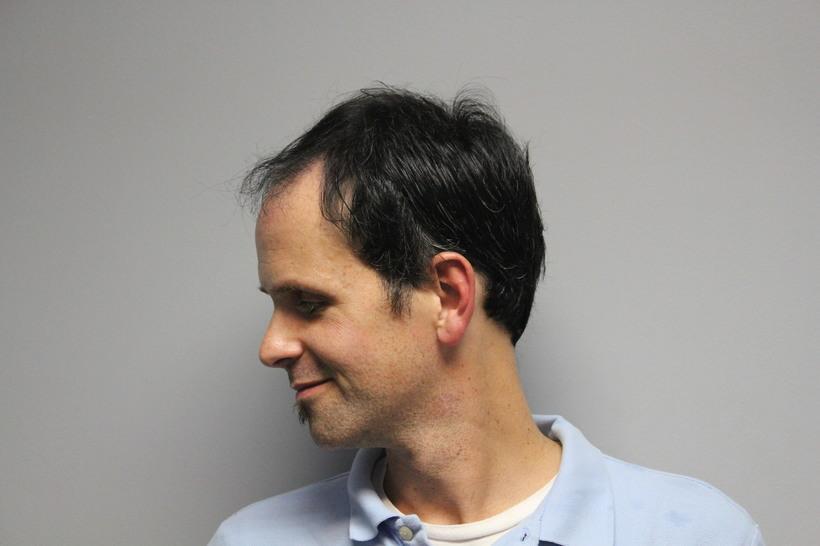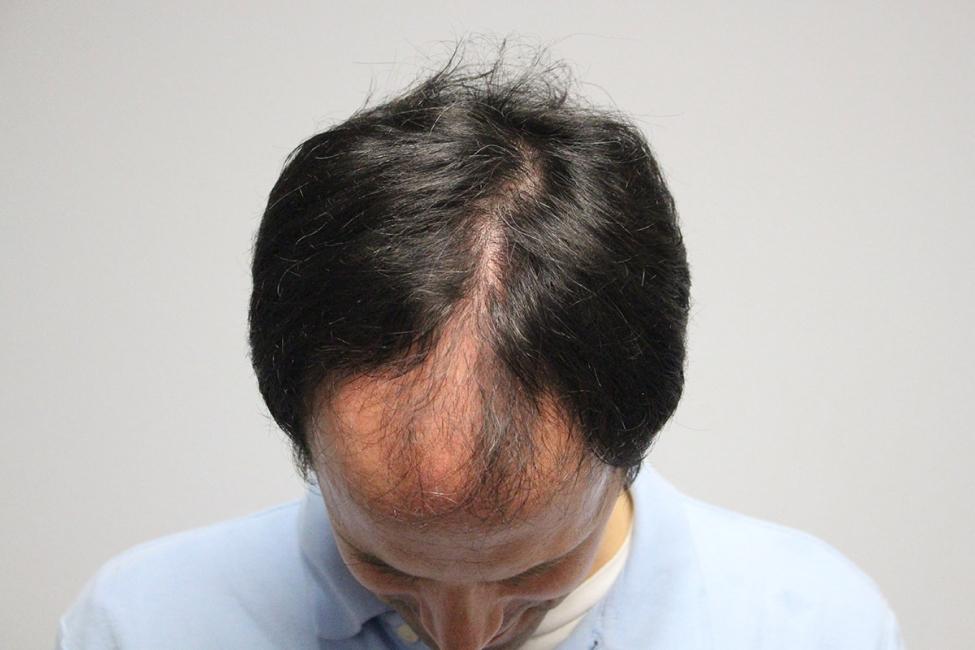
September is Alopecia Awareness Month. Many people ask me what is alopecia exactly? The word alopecia itself is the medical term for hair loss. It does not refer to one specific form of hair loss. Any form of hair loss is alopecia. I’ve been helping people young and old with various types of alopecia for decades. I’ve seen it all. There are a few distinct categories of alopecia. Let me break down a few of them.
Androgenetic alopecia
This is the most common form of progressive hair loss. With this form of alopecia there is usually a gradual onset, increased shedding, and miniaturization of the hair follicle. It’s also commonly known as male or female pattern hair loss, since it’s a genetic hair loss condition. It can be passed down through genes on either the maternal or paternal side.

Examples of androgentic alopecia:
Alopecia areata
This is an autoimmune condition in which the body’s immune system attacks healthy hair follicles. It can result in one, multiple patches, or spots of hair loss. It usually affects the scalp, but can also occur in other areas of the body.
Alopecia totalis
This is an advanced form of alopecia areata. It’s a total loss of hair on the scalp.
Alopecia universalis
This is the most advanced form of alopecia areata. It’s a total loss of all hair on the body, including eyebrows, and eyelashes.
Cicatricial alopecia
This is known as scarring alopecia. It’s hair loss which occurs when the follicles are destroyed and replaced by scar tissue. Once the follicle has been destroyed, the hair will not grow back.

TRANSITIONS HAIR SOLUTIONS/CRLAB
The good news is there are lots of non-surgical hair solutions for people diagnosed with each kind of alopecia.
An excellent option for all types of alopecia is a CNC hair and scalp prosthetic from CRLAB of Italy. It’s a custom made hair and scalp prosthetic produced by utilizing scalp mapping and 3D printing technology to duplicate an extremely natural looking hair and scalp. Many of my clients choose this option because of the flexibility it offers. It often becomes part of them, because of the ability to wear it permanently for 4 weeks, or sometimes longer. They forget it’s even there. The CNC does not limit them in any activities. No compromises.
In my opinion, those in the early stages of androgenetic alopecia can also consider trichological treatments. Trichology is the study of the hair and scalp. Trichological treatments are great for somebody who has minimal to moderate hair loss. Because trichology treatments provide the best possible environment for healthy hair growth, it will help retain existing hair and keep the scalp healthy. A lot of my clients are using a trichology system to maintain the right pH balance for their hair and scalp. It’s a good way to get to the root of the problem.
People with all forms of alopecia can also consider various wigs and hair pieces. There are a lot on the market and they come in human hair or synthetic hair. They can be pre-made or custom fit. Clients may choose this option when they are not quite ready for permanent piece or if their alopecia situation may be changing. Also, if a client needs something immediately, a pre made wig or hair piece may be an option.
Those with androgenetic alopecia and alopecia areata can look at camouflaging and cosmetic products. These are things such as hair fibers added to existing hair or alopecia masking lotions. This is a good choice for clients who have smaller areas of thinning, patches, or spots of hair loss in more inconspicuous areas. It’s also ideal for those who may not be ready to wear a prosthetic, wig, or hair piece. The colored fibers can be added to existing hair to make that area appear fuller and camouflage the scalp showing. The lotions or powders are good for coloring in bald patches or spots from alopecia areata to match the rest of the existing hair.
As you can see there are a lot of options available to people with alopecia. The best thing to do after getting a diagnosis from a medical professional is to find an expert to consult with who can help tailor a solution to you. You can find me at transitionshairsolutions.com .
SHARE THIS ARTICLE:









